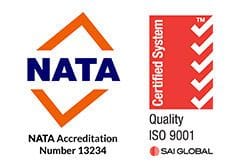HomeAbout UsServices
Asbestos Services
CareersBlogContact UsAsbestos Audits (Division 5)Division 6 Asbestos AuditAsbestos Identification/SamplingVisual ClearanceAir MonitoringSMF MonitoringAsbestos Training Courses
TrainingTraining ScheduleTailored Training Solutions
Occupational HygieneBehavioural Safety for ManagementConfined Space Entry for SupervisorsEnvironmental Management TrainingFacility Management TrainingHazard & Operability - HAZOP StudyHAZCON Study - Incorporating HSE into the Design of Commercial BuildingsIntroduction to the Legal Aspects of Occupational Health & Safety (2hours)Managing & Planning Asbestos Removal ProjectsOHS HSR ForumOHS Regulations 2017 - Your Role as a SupervisorPermit to Work (PTW) TrainingPrevention of falls from HeightsRisk Management & Plant SafetySafe Work in Confined SpacesStress ManagementUnderstanding the construction industryUnderstanding the OHS Regulations 2017
LeadershipOHS Training for Managers & SupervisorsHealth Safety Representative TrainingWork Health & Safety Training QueenslandAsbestos Training CoursesCPCCDE3015 Remove friable asbestosCPCCDE3014 Remove non friable asbestosCPCCDE4008 Supervise asbestos removalAsbestos AwarenessClass A Asbestos Removalist Refresher TrainingClass B Asbestos Removalist Refresher Training
Heights TrainingConfined Space TrainingDangerous Goods and Hazardous ChemicalsTLID0021 Store and handle dangerous goods and hazardous substancesHazardous Substances & Dangerous Goods in the Workplace
Silica Dust AwarenessHSE TrainingEmergency WardenExcavation and Trenching AwarenessHazardous Manual HandlingHazardous Substances & Dangerous GoodsHealth and Safety in the OfficeNoise and Hearing ConservationPractical Risk Assessment & Job Safety Analysis (JSA)Preventing & Responding to Workplace BullyingPreventing & Responding to Work Related Violence
Innovative Occupational Hygiene Training for Developing Safety ProfessionalsW201 Fundamentals of Occupational HygieneW501 Measurement of Hazardous SubstancesW502 Thermal EnvironmentW503 Noise - Measurements and EffectsW504 Asbestos and Other FibresW505 Control of Hazardous SubstancesW506 Ergonomics EssentialsW507 Health Effects of Hazardous Substances
Student, Venue and Training Booking InformationVerification of CompetencyDust & Silica Monitoring & ServicesNoise Monitoring & ServicesOccupational Hygiene Monitoring (Chemical)Air Quality (IAQ)Bio aerosol Sampling (Mould, Bacteria & Fungi)Clandestine Laboratories Clearance & Clean Up
HSE ManagementOHS Management SystemsHSE AuditingHigh Risk Focused AuditsDue DiligenceCooling Tower AuditsContractor ManagementRisk RegistersManual Handling and ErgonomicsHazardous Substances and Dangerous Goods (chemical safety consulting)HSE Specific Hazard ProgramsAccident/Incident Investigation and RecoverySafety ServicesEmergency Management
Environment




